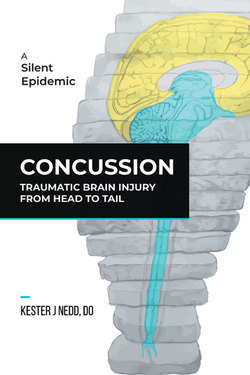Читать книгу Concussion - Kester J Nedd DO - Страница 13
На сайте Литреса книга снята с продажи.
ОглавлениеCHAPTER 7
What constitutes an injury?
FOR AS LONG as I have been in the field and even before my time, the questions of what constitutes a concussion or TBI and when the signs and symptoms experienced by a patient can be attributed to a TBI or concussion have been considered. At the heart of this issue lies the question of over-diagnosing or under-diagnosing concussions. In commenting on sport-related concussions, Parveen Satarasinghe stated in an article published in the Journal of Experimental Neuroscience, “Without a better understanding of sport-related concussion, the over-diagnosis and under-diagnosis of concussion can be detrimental to athletes and sport as a whole. For example, over-diagnosis of concussion can cause athletes to unnecessarily miss games, lose training time, and even suffer a reduction in pay. On the other hand, under-diagnosis of concussion becomes a public health concern with concussed and sub-concussed athletes continuing to play which may lead to neurodegenerative processes later in life.” (Satarasinghe 2019).
More recent evidence revealed has forced us to consider this question in a different light.
• Recently discovered markers of injury that may become useful in early detection
• The findings on the MRI that show lesions even in patients without significant clinical signs and symptoms
• Injured patients previously felt to have mild concussions, with repeated hits to the head, showing signs of dementia (CTE) in later years
• Certain clinical signs and symptoms that have relevance in the diagnosis not previously considered
• Patients, with resolution of the signs and symptoms of injury, when provoked or stressed with external environmental stimuli, show return of the initial signs and symptoms. In fact, the symptoms may be present, but both the patients and those around them may fail to acknowledge them and make the connection to concussion/TBI.
The most recent research in TBI/concussion indicates that over time, multiple sub-concussive blows to the head, in which case the patient does not present with signs and symptoms of concussion, can result in long-term cognitive-behavioral issues, as seen in conditions such as CTE, Alzheimer’s, and Parkinson’s disease (Moore 2017, McAllister 2017, Gardner 2015, Washington 2016).
There are many patients with TBI/concussion, which, if studied thoroughly, can change not only our attitudes towards certain conditions but also how we identify, follow, and treat such persons. These include the following:
• Individuals involved in certain sports with prior concussions
• Individuals involved in a road traffic accident with concussion
• Individuals in prison
• Military personnel returning from the battlefield
• Patients who we believe have chronic psychiatric conditions that may have a basis in trauma to the head/brain
Proving the existence of TBI/concussions – The value of injury and recovery markers
Because of its complexity, TBI/concussion should not be viewed as one disease. It is manifested in different ways based on how many dimensions and domains exist. Science has been measuring brain “markers” for years, and these include levels of neurotransmitters and hormones, proteins and antibodies to certain proteins, specific tissue markers, neuropsychological parameters, sensors in helmets, genetic markers, and side line testing, and virtual reality goggles. This also includes various electrical examinations utilizing electroencephalograms (EEGs) often referred to as the brain wave test, newer sequences in diagnostic imaging with MRI, and the more recent introduction of radioisotopes in PET. While these markers do add value, they must be looked at in the context of other brain dimensions and domains to be of significant value.
At the end of the day, when it is all said and done, the reasons for evaluating and testing persons for concussion and TBI are as follows:
Table # 6 – Reasons for evaluation and testing
| Reason | Description |
| First | The first and main reason is to determine how much disruption has occurred in the nervous system and how to define and classify such a disruption |
| Second | The key features that herald the worsening or improvement from the initial and follow-up data or measures must be determined |
| Third | The process of recovery or deterioration over time through various analytic methods is to be tracked |
| Fourth | It must be understood whether the compensatory methods that the body develops and puts in effect are good, bad, or indifferent during the process of recovery |
| Fifth | Appropriate treatment interventions must be implemented at each stage, and one must know when changes in the interventions are needed, as the nervous system is constantly changing. Brain injury is not a static encephalopathy as we once thought it to be. There are constant ongoing changes, even in the chronic stage |
| Sixth | In observing the multi-dimensional approach, clinicians can form certain impressions and therefore be able to predict the future and make prognostic estimations |
